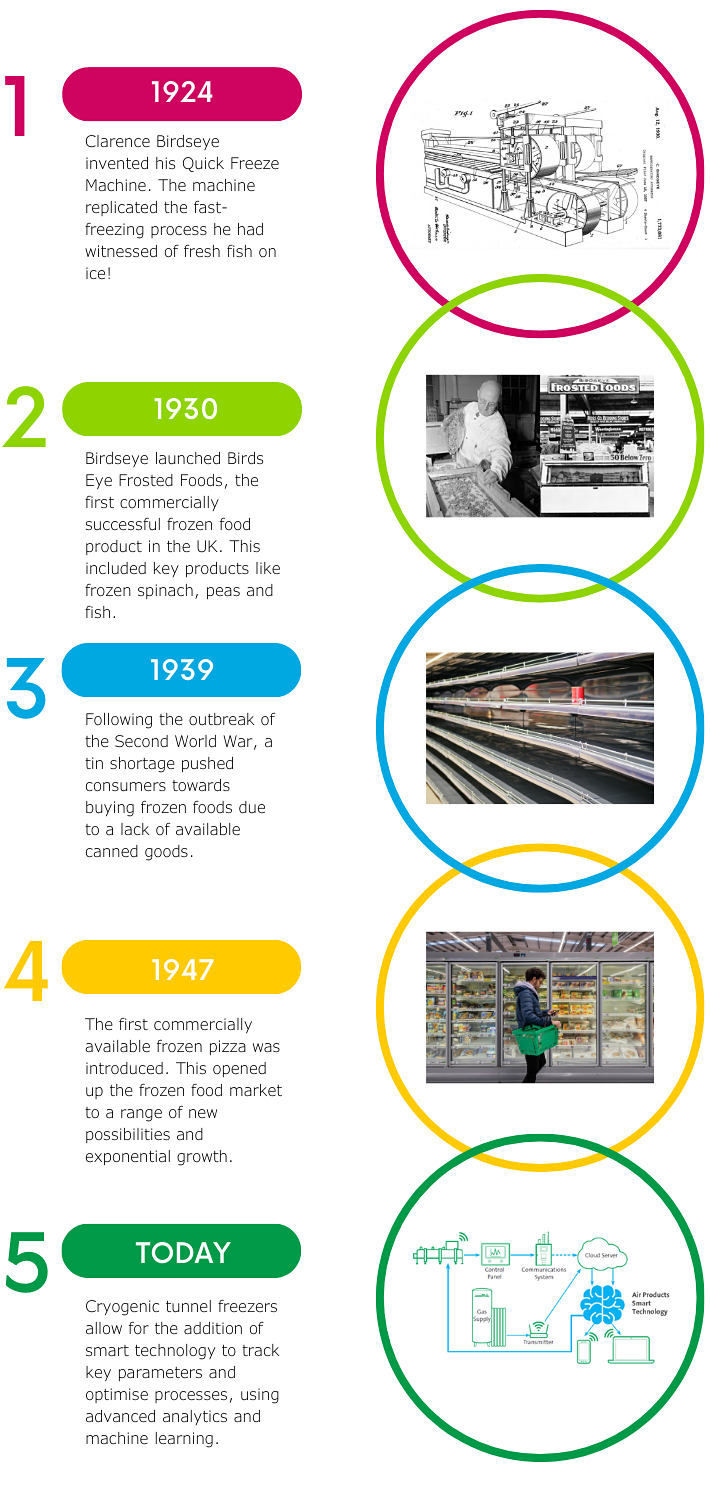2024 marks a notable milestone for the frozen food industry: 100 years since biologist Clarence Birdseye first invented the technology behind deep freezing. Little did we know back then that it would revolutionise the growing global industry we know today.
Frozen food has become widely renowned for its sustainability, cost and nutritional benefits, with more consumers being drawn to the frozen food aisle following impacts from the pandemic and the cost-of-living crisis. Today, the industry is growing faster than ever, with the British Frozen Food Federation reporting that the value of frozen food sales increased by 9.5% (over £273 million) year-on-year during the first quarter of 20231.
As the UK’s frozen food market continues to grow, we’re looking back on the history of frozen food to celebrate its 100th anniversary – and how we can help with what the future might hold in years to come.
What’s the reality now?
Fast forward to the present day and, frozen food has continued to grow in popularity with its long shelf life and low costs. As demand for frozen and chilled food continues to rise, freezing technology has advanced significantly, offering a range of new advantages for food manufacturers as they gear up to match consumer demand.
Mechanical freezing, for instance, uses a circulating refrigerant to achieve a gradual temperature reduction via heat exchange from air to product. Meanwhile, cryogenic freezing involves the direct application of liquid nitrogen or carbon dioxide over the product for it to freeze over. You can find out more about these two processes and the sorts of businesses and products they suit best here.

What does the future hold?
Healthy, affordable and accessible, there is no doubt that demand for frozen food products will continue to grow over years to come. With the sector now moving towards increased use of data-driven processes and AI, Air Products is continuing to pioneer what its customers need from their freezing solutions, supporting them as the industry grows and changes.
Remote monitoring through the use of Air Products Smart Technology in cryogenic freezers is one such innovation. Diagnostic sensors and wireless communications technology allows for the monitoring and operation of key freezing controls remotely, while still being able to track process parameters and suggest improvements based on advanced analytics. The system allows our customers to review their nitrogen use from an easy-to-use dashboard, so they can optimise usage and reduce excess consumption.
It’s clear that the frozen food market isn’t slowing down any time soon. Looking 100 years into the future we’ll keep developing our freezing solutions as preferences in raw materials and foodstuffs evolve. We will continue our commitment to the core principles of maximising safety, driving production efficiency, and reducing waste & energy usage.
It will become increasingly important for our customers to be ready to match consumer demand while continuing to innovate and stay ahead of the curve.
1 https://bfff.co.uk/frozen-food-market-returns-to-volume-growth-in-q1-2023






